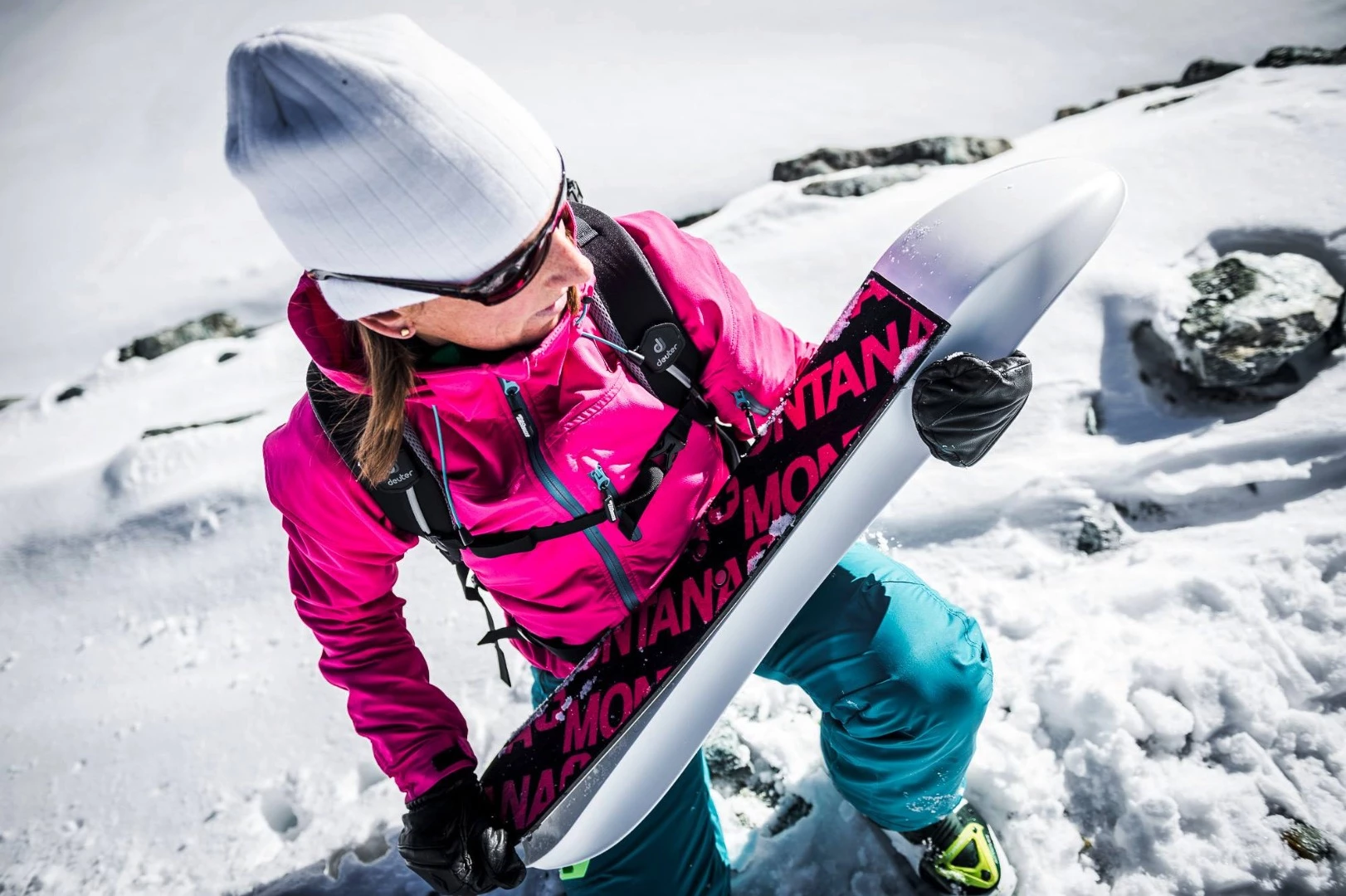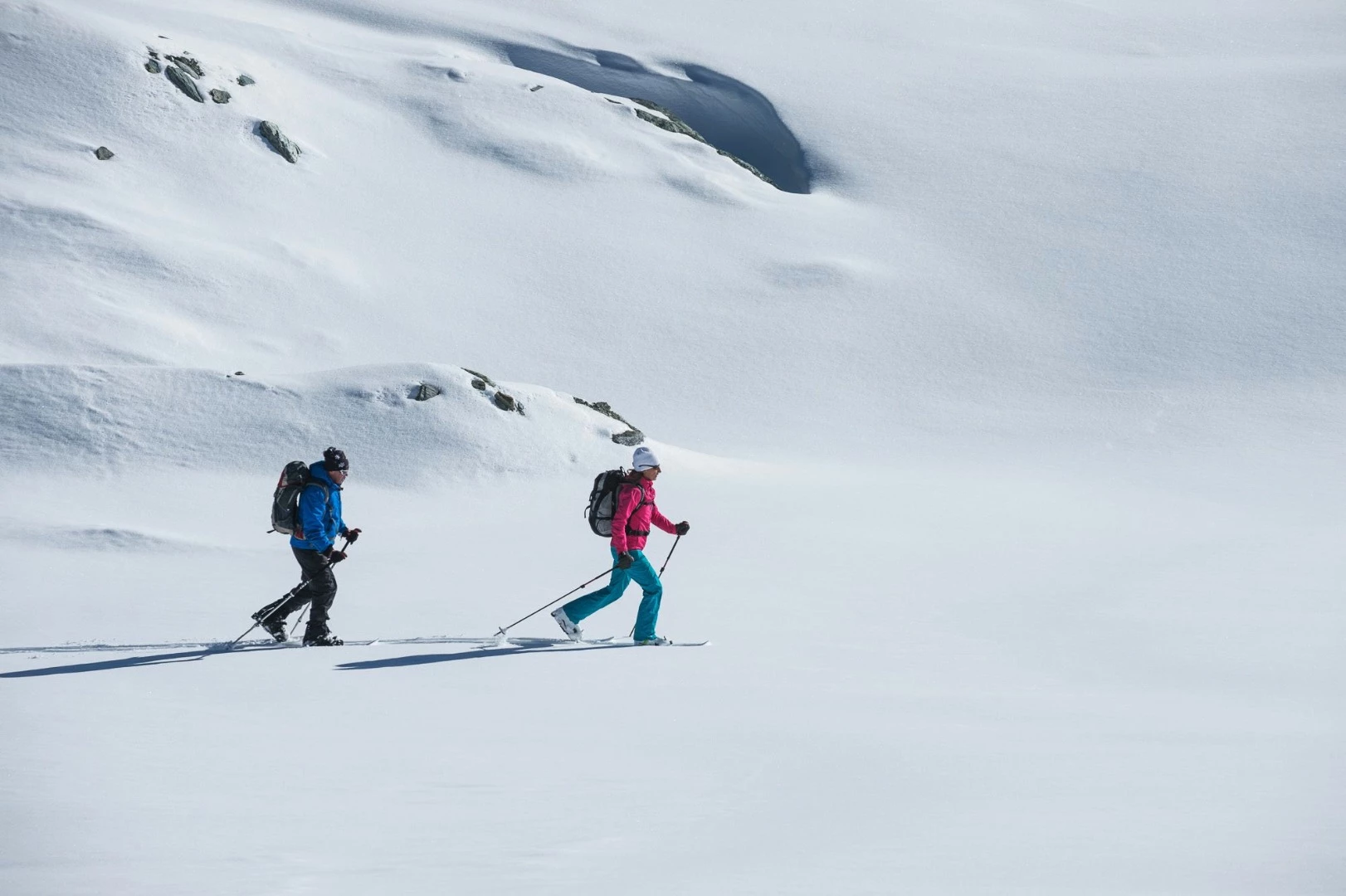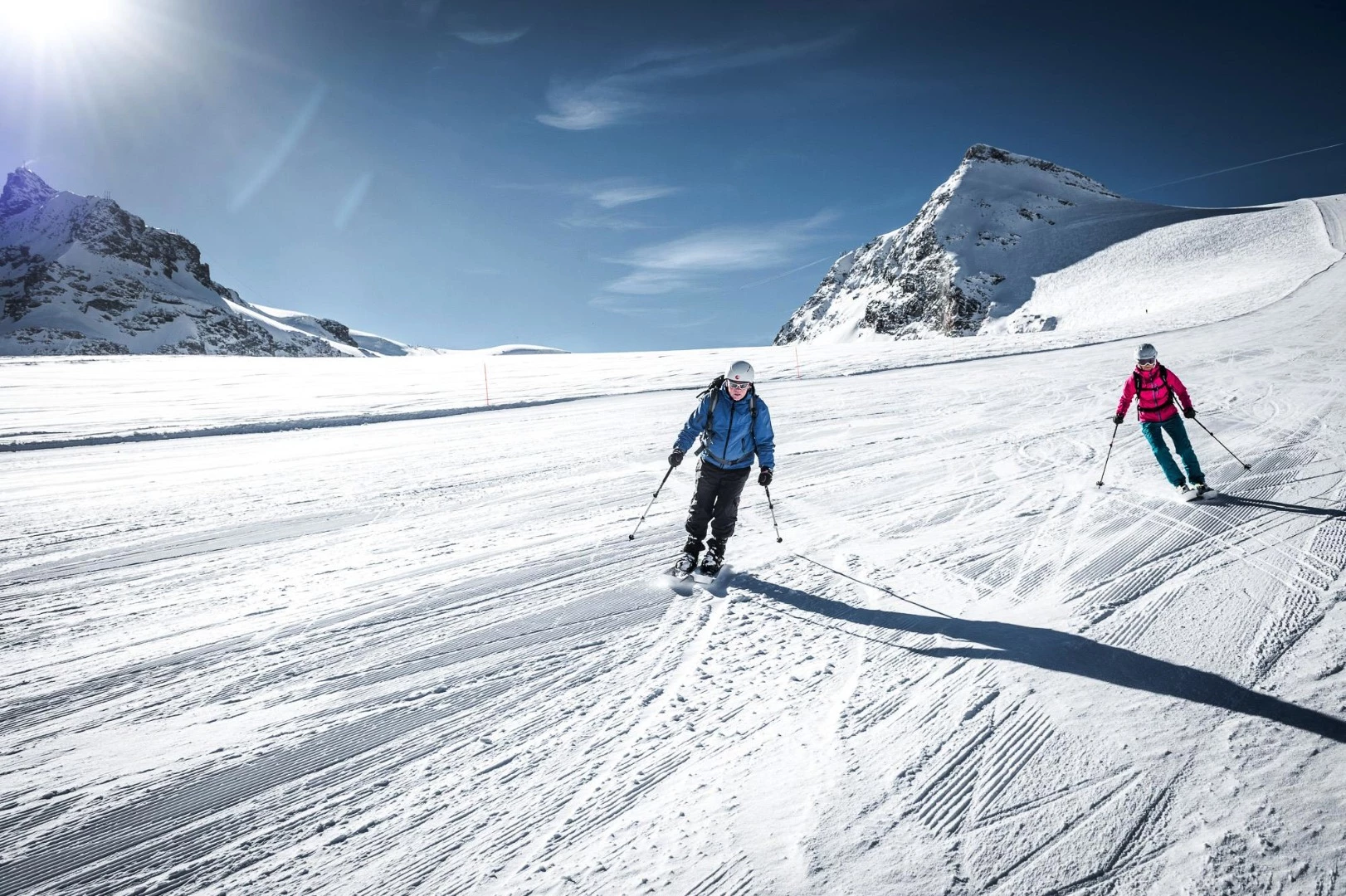At ISPO 2012, Hive took the snowshoe in a different direction with a design made to glide downhill in addition to climbing uphill and traversing across the hill. While an interesting concept, the short, wide shoes didn't look particularly well-designed for downhill gliding, and they didn't exactly take the winter sports world by storm. The recent ISPO 2016 show brought another skiable snowshoe design to light, and though the all-new Crossblades probably won't shake up winter sports any more than the Hives, they should make for more convincing descents.
Switzerland's Inventra AG refers to the all-new Crossblades as snowshoes, but with a fairly narrow body and built-in climbing skins they seem more like compact backcountry skis. You could also think of them as a touring snowblades/skiboards.
Each blade is just 89 cm (35 in) long and features a flat, removable "swivel plate" base mounted to a wider upper. The magnetic swivel plate has its own permanently integrated climbing skin for ascents, and the Crossblader glides forward on the snow without lifting their feet.
When it's time to ski back down the hill, the blader simply pops the swivel plate free and flips it over to the smooth base with steel edges, which provides a ski-inspired descent. The swivel plate's front tabs secure into the upper body, and two central magnets and a rear latch hold it in place.
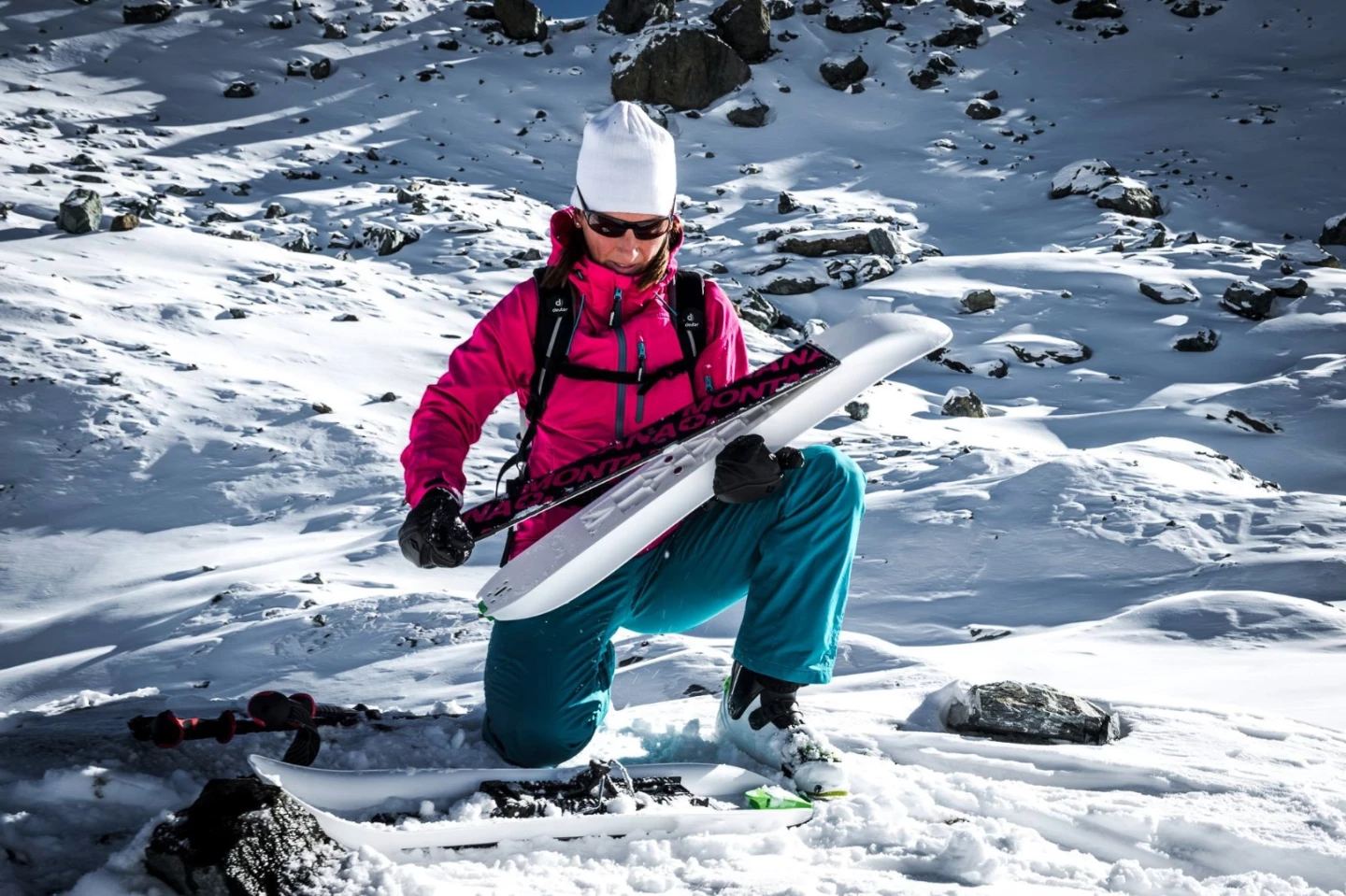
The combination of ski-like base and tub-like upper is designed to provide performance on both hard-pack snow and deep powder. The base grips and maneuvers on harder snow, while the larger upper provides added surface area for better float in powder.
The Crossblade binding also offers both climb and glide modes, much like an alpine touring ski binding. Climb mode keeps the heel free so that the wearer can walk with ease, while glide mode secures the boot to the blade, just like a ski. Inventra offers a choice of soft boot bindings for use with hiking boots and hard boot bindings for ski boots.
The Crossblades look more downhill-friendly than Hive snowshoes, but they aren't a suitable replacement for traditional skis when it comes to skiing steep, rugged mountains. Inventra recommends sticking to the "gentle to moderately steep slopes" you might find in mountain foothills. It also says the base plate is not meant for hot waxing.
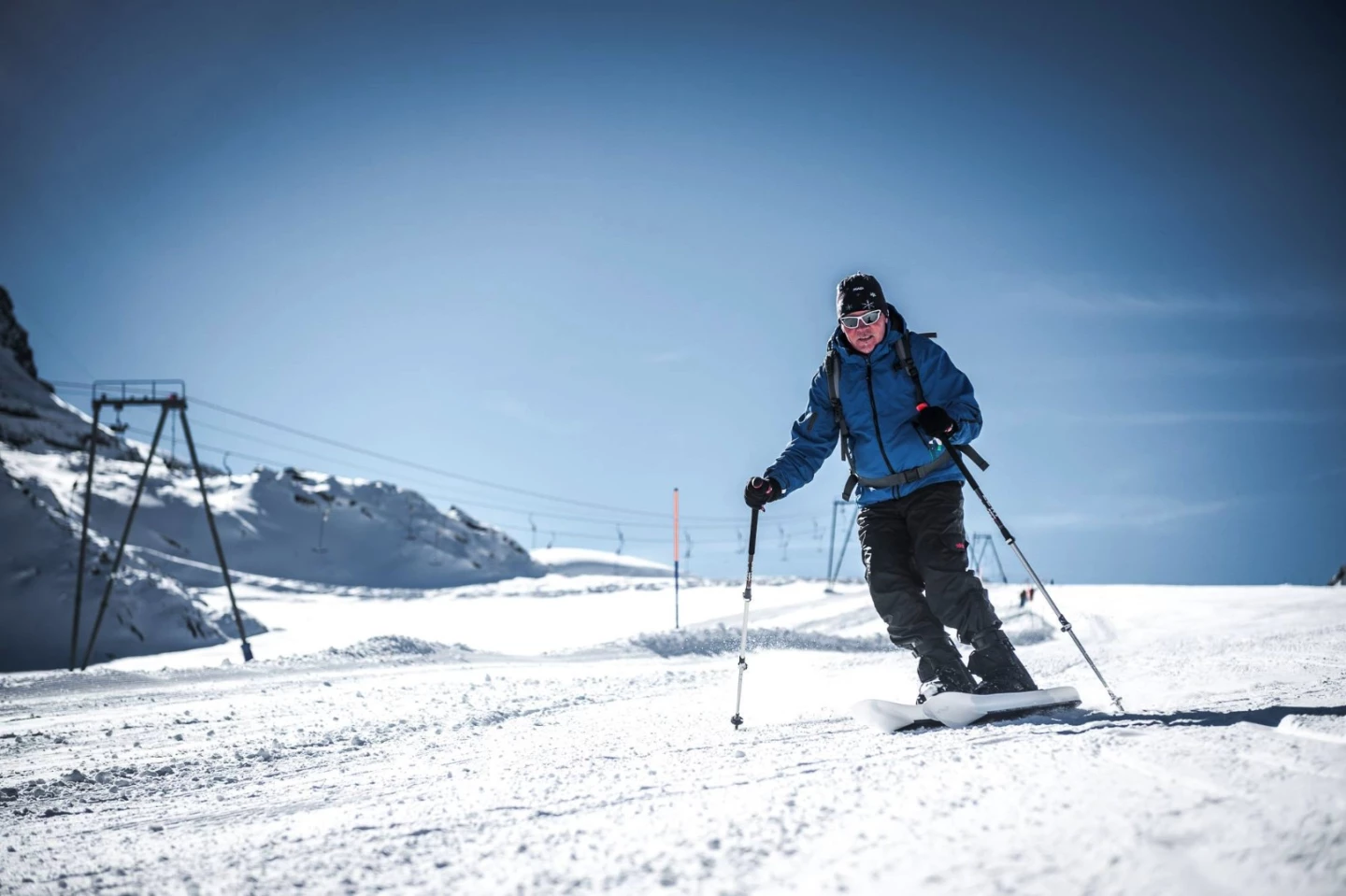
Crossblades should be a fun snowshoe/cross country skiing alternative for climbing and gliding over undulating terrain. Inventra even shows them being put to use at a ski resort in the video promo posted below. It suggests that beginners start on level terrain and says the base plate can be used skin-side down for slower descending.
The Crossblades cost CHF559 (US$560) for the hard boot binding model (8.2 lb/3.72 kg per pair) and CHF599 (US$600) for the soft boot binding version (9.5 lb/4.32 kg/ per pair).
Source: Crossblades






